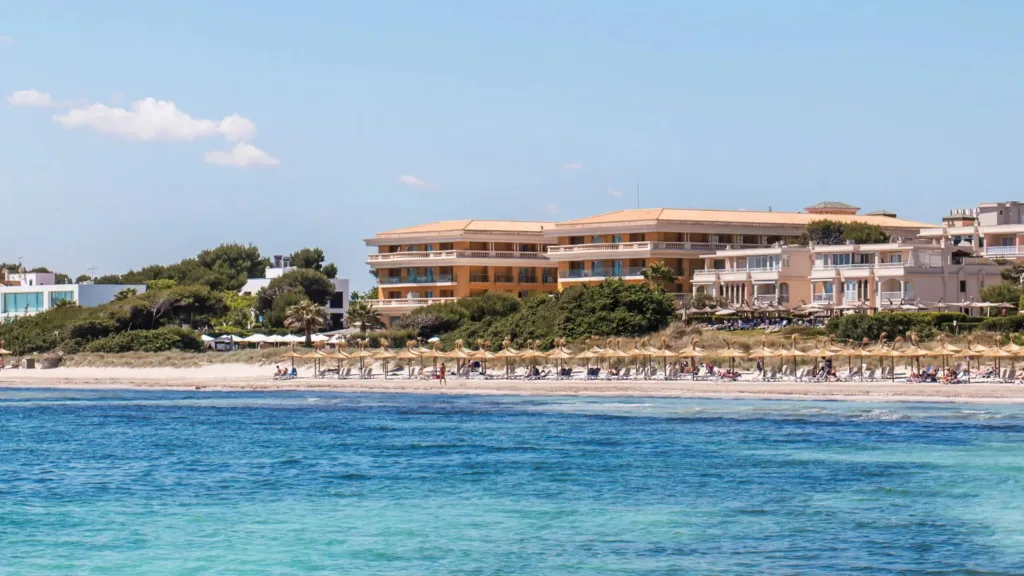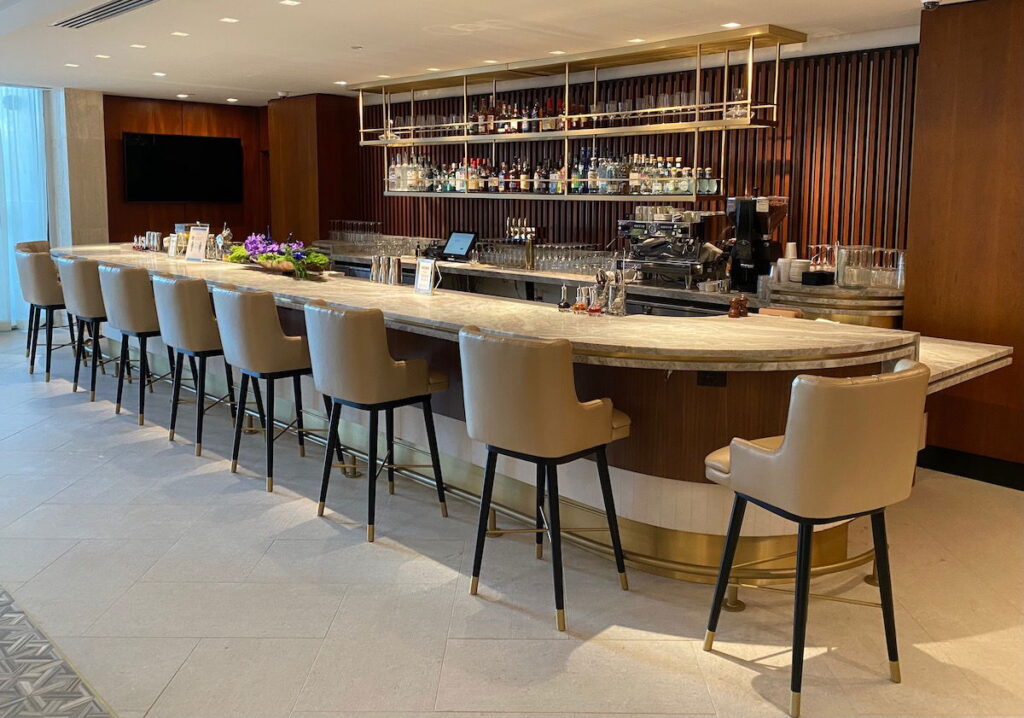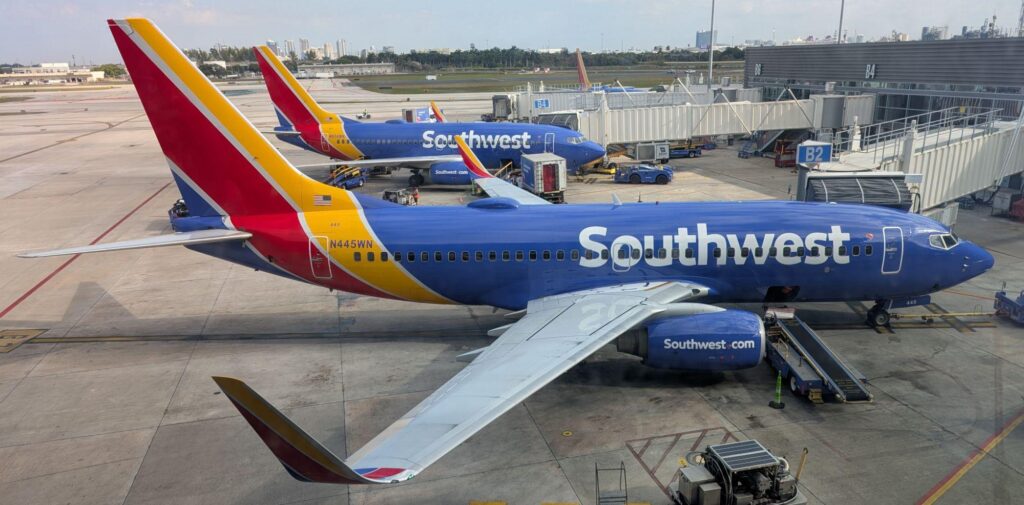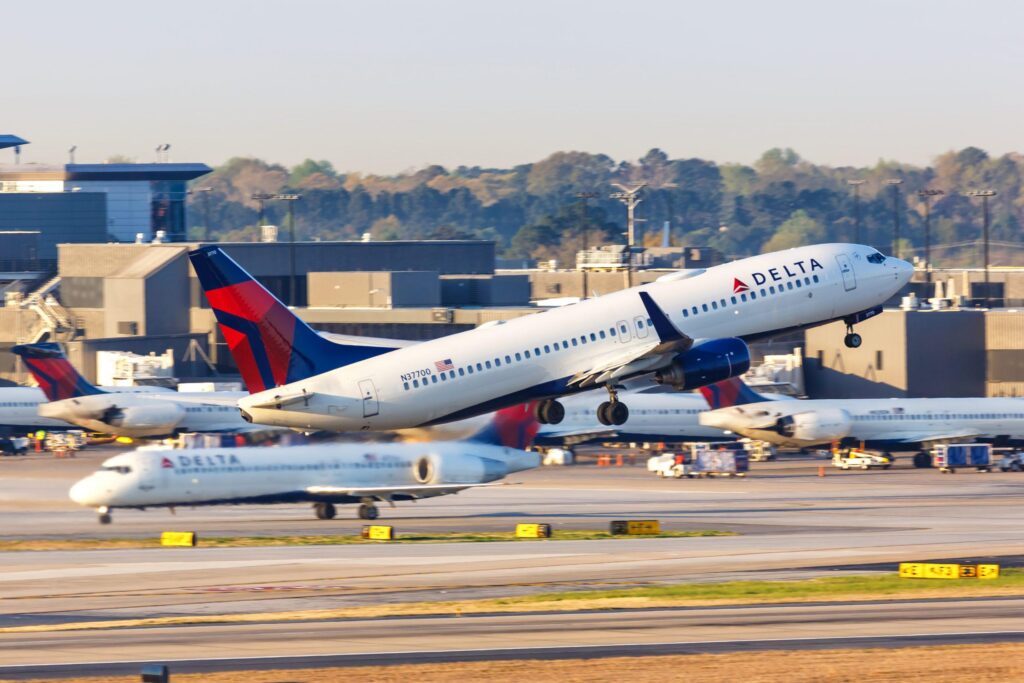A Year In Review: Remote Work Getaways & Trends in 2024
The year 2024 has been a transformative period for remote work, reshaping not only how we perceive the workplace but also how we integrate work with our personal lives. The global shift towards flexible working arrangements has opened new horizons for professionals seeking to balance productivity with personal fulfillment.
As companies and employees adapt to this new landscape, the synergy between remote work and the yearning for flexibility and mobility has sparked unique opportunities such as “Remote Work Getaways – Blending Work with Travel“. These experiences allow individuals to combine their professional responsibilities with travel and leisure, exploring new environments while staying connected to their work obligations.
In this comprehensive review, we delve into the trends that have defined remote work in 2024, examining how technological advancements, changing corporate policies, and evolving employee preferences have influenced our ability to work from anywhere. From the widespread adoption of hybrid work models to the rise of Digital Nomadism Trends in 2024, we explore the multifaceted impact of remote work on our daily lives and the global economy.
The Shift Towards Hybrid Work Models

In 2024, a significant shift towards hybrid work models emerged, blending the benefits of remote work with the advantages of in-person collaboration. This approach has become a cornerstone for many organizations seeking to balance operational efficiency with employee satisfaction.
For instance, companies like Amazon enforced mandatory office days, implementing a structured hybrid model to boost team interaction and foster a cohesive company culture. This move aimed to leverage the collaborative energy that comes from in-person meetings while still offering employees the flexibility to work remotely part of the time.
Conversely, companies such as H&R Block reversed previous mandates for office returns, recognizing that flexibility was key to maintaining high levels of employee satisfaction and productivity. This decision was backed by internal surveys and performance metrics showing that remote workers were able to meet or exceed their in-office counterparts’ effectiveness.
Such contrasting strategies highlight the ongoing debate over the optimal balance between remote and in-office work. According to the Flex Index Report on Work Location Trends in 2024, there was a notable decrease in full-time office requirements across industries.
The rise in structured hybrid models was particularly evident in sectors like technology and insurance, where the nature of work lends itself well to remote or flexible arrangements. The report indicated that 67% of U.S. firms now provide work location flexibility, emphasizing a nationwide shift towards accommodating employees’ preferences.
The Western regions of the United States, including states like California and Colorado, offered more remote opportunities, signaling a geographical shift in work culture. This trend can be attributed to the concentration of tech companies and startups in these areas, which are often more open to innovative work arrangements.
For businesses aiming to maintain a competitive advantage in 2025 and beyond, adopting flexible work models and fostering clear communication between employers and employees has become essential. The emphasis on hybrid work underscores the importance of adaptability in evolving business landscapes.
Hybrid work models not only cater to employees’ desires for flexibility but also address companies’ needs for in-person collaboration. The balance achieved through this approach enhances productivity and job satisfaction, proving to be a sustainable solution in the post-pandemic world.
As we move forward, the hybrid model is expected to dominate, blending the best of both remote and office work environments. This shift towards hybrid models is more than just a trend—it’s a strategic response to the changing dynamics of the modern workforce.
By embracing this flexibility, companies can attract top talent, improve employee well-being, and foster a culture of trust and autonomy. Businesses that successfully navigate this transition are likely to see long-term benefits in employee retention and organizational performance.
Remote Work By the Numbers: A Statistical Overview

The prevalence of remote work has soared in 2024, marking one of the most significant shifts in employment practices in recent history. Approximately 20% of the workforce now operates remotely, a figure that represents millions of employees across various industries.
Projections from the 2024 Remote Work Statistical Analysis Report indicate that by 2025, this number will rise to 32.6 million Americans, reflecting the sustained momentum of this work model.
A remarkable 98% of workers have expressed a desire to work remotely at least part-time, highlighting a strong preference for flexibility in work arrangements. This overwhelming majority underscores a fundamental change in employee expectations and workplace norms.
Employers are increasingly recognizing that offering remote or hybrid work options is essential for attracting and retaining top talent. The Computer & IT sector is at the forefront of this shift, leading the way in adopting remote work practices. The nature of IT work, which often involves digital tasks that can be performed from any location, makes it particularly well-suited for remote arrangements.
Furthermore, 16% of companies have transitioned to being fully remote, a considerable increase from pre-pandemic numbers. This shift is not limited to IT; remote roles now span diverse industries, including finance, education, healthcare, and customer service.
Interesting trends have emerged regarding the types of jobs moving to remote formats. For instance, accountants and financial advisors have become some of the most common remote jobs in 2024, showcasing the versatility and adaptability of professions traditionally considered office-bound.
This shift is facilitated by advancements in technology, such as secure cloud computing and specialized software that allows professionals to access and manage sensitive data remotely.
Demographic insights reveal intriguing patterns in remote work adoption. Workers with a high school education are more likely to be fully remote (24%) than those with bachelor’s degrees (18%) or advanced degrees (15%). Additionally, income plays a role; lower earners are more frequently working entirely remotely compared to higher earners.
These findings suggest that remote work opportunities are expanding access to employment across different socio-economic groups, potentially reducing geographic and financial barriers to entry.
Geographical disparities also exist. States like Colorado and Oregon lead in the number of remote workers, while others like Mississippi and West Virginia lag behind. These regional differences highlight the importance of local policies, infrastructure, and the presence of industries conducive to remote work.
Regions investing in high-speed internet access and supportive business environments are better positioned to capitalize on the remote work trend. These remote work trends in 2024 demonstrate a significant transformation in the American workforce, signaling a shift that is likely to continue in the coming years.
Understanding these statistics helps businesses and policymakers make informed decisions about how to support this evolving workforce.
The “Work-From-Anywhere” Approach and Its Impact

The concept of “work-from-anywhere” has gained substantial traction in 2024, effectively dissolving geographical barriers and redefining the traditional workplace. This innovative approach allows employees to work from any location, whether it’s their home, a co-working space, or a different country altogether.
By embracing this model, companies can tap into Global Talent Pools for Remote Work, promoting diversity within their organizations and fostering a more inclusive culture.
Eliminating location constraints enables companies to access a wider range of skills and perspectives, enhancing innovation and competitiveness. For example, a tech firm based in Silicon Valley can now hire a software engineer in Bangalore or a UX designer in Buenos Aires, bringing together a diverse team with unique insights and experiences.
This global reach not only broadens the talent pool but also allows for round-the-clock productivity due to time zone differences. Technological advancements, particularly in artificial intelligence (AI) and communication platforms, have played a pivotal role in facilitating remote work.
AI tools have improved productivity by automating routine tasks and providing intelligent analytics, enabling employees to focus on more strategic and creative endeavors. Applications like AI-Powered Collaboration Tools for Remote Teams have enhanced communication and collaboration, bridging the gap between remote teams and fostering a sense of connection despite physical distances.
The “work-from-anywhere” model has also empowered individuals to embrace digital nomadism, a lifestyle where professionals work remotely while traveling to different locations. Professionals are now combining work with travel, exploring new places while maintaining their career progression.
This trend not only enriches personal experiences but also contributes to employee well-being and satisfaction, which are crucial components of retention strategies. Resources like Guide to Becoming a Successful Digital Nomad in 2024 have become invaluable for those looking to embark on this journey.
However, this approach comes with challenges such as ensuring cybersecurity across diverse locations and maintaining a cohesive company culture. Companies are addressing these concerns by investing in advanced collaboration tools, virtual coworking spaces, and robust security measures like VPNs and multi-factor authentication.
The emphasis on employee well-being is also evident through initiatives that prioritize mental health, such as providing access to virtual counseling services and promoting a healthy work-life balance. Moreover, organizations are developing comprehensive Remote Work Policies and Best Practices to set clear expectations and guidelines for remote employees. These policies cover topics such as availability, communication protocols, data security, and performance metrics. By establishing a strong framework, companies can mitigate potential issues and ensure that remote teams operate efficiently and cohesively.
Challenges of Remote Work and Strategies for Success

While remote work offers numerous benefits, it also presents challenges that organizations must navigate to ensure sustained productivity and employee engagement. One of the primary obstacles is maintaining productivity in a remote setting. Without the structure of a traditional office environment, some employees may struggle with time management or distractions at home.
To address this, companies are adopting clear communication strategies, implementing effective management practices, and utilizing digital tools that facilitate collaboration and accountability. Organizations are shifting focus from time spent in the office to the quality and output of work, reshaping traditional performance metrics.
Tools like Project Management Software for Remote Teams help track progress and deadlines, ensuring that everyone stays aligned with company goals. Regular virtual meetings and updates contribute to a sense of teamwork and keep projects on track.
Combating isolation is another significant concern associated with remote work. Without the natural social interactions of an office environment, employees may experience feelings of disconnection and loneliness. To address this, organizations are prioritizing mental health initiatives, promoting virtual team-building activities, and encouraging regular check-ins between managers and team members.
Activities such as virtual coffee breaks, online workshops, and social channels within communication platforms can foster a sense of community. Engagement levels can also be impacted in remote settings. The NBER paper “From Crisis to Norm: Remote Work Trends and Employee Engagement Across Industries, Occupations, and Geography” highlights that while remote work is correlated with job satisfaction, engagement is more closely tied to other workplace features, such as HR policies, leadership styles, and opportunities for professional development.
This suggests that to enhance engagement, companies need to focus on creating a supportive culture and strong leadership practices, regardless of where employees are located. Cybersecurity concerns have become more pronounced with the rise of remote work. Protecting company data across various networks and devices is a priority, as remote work can expose organizations to new vulnerabilities.
Organizations are investing in cybersecurity training for employees, implementing strict security protocols like two-factor authentication, and utilizing secure communication platforms to mitigate risks. Adopting tools like Secure Remote Access Solutions for Businesses ensures that sensitive information remains protected.
Adapting to these challenges requires a proactive approach. By investing in the right technologies, fostering open communication, and emphasizing employee well-being, organizations can overcome the obstacles of remote work and create a productive, engaged workforce. Understanding and addressing these challenges is essential for long-term success in the evolving work landscape.
Regional and Industry Trends in Remote Work

Remote work trends in 2024 have shown significant variation across regions and industries. Key sectors like Technology and Insurance are leading in flexibility, with a notable increase in remote and hybrid roles. According to the Flex Index Report, 39% of companies now require full-time on-site work, a decline that reflects the growing acceptance of remote arrangements.
This shift enhances productivity and satisfaction, particularly when management supports flexible work practices. Geographically, the Western United States offers more remote opportunities, while certain areas in Europe have seen a decrease in remote work as employers push for office returns.
States like Colorado have the highest number of remote workers, whereas Mississippi has the fewest. These differences highlight how local economies, industries, and policies influence remote work adoption. For example, regions with strong technology sectors or investment in digital infrastructure are better positioned to support remote work.
Demographic factors also play a role in remote work trends. Workers with lower incomes are more likely to work entirely remotely compared to higher earners. Additionally, those with a high school education are more often fully remote than individuals with higher education levels.
Such trends suggest that remote work is providing employment opportunities to a broader segment of the population, potentially reducing inequalities in the job market. The gig economy is another aspect influencing remote work, with projections indicating a $455.2 Billion Gig Economy Market. Gig workers may outnumber full-time employees by 2027, prompting companies to adapt to this shift.
Embracing remote and flexible work models becomes essential for talent acquisition and retention across various industries. Platforms that connect freelance workers with employers are thriving, further fueling the growth of remote work. Understanding these regional and industry trends helps businesses tailor their strategies to attract and retain talent.
By recognizing the unique needs and preferences of different workforce segments, companies can develop policies and practices that support their employees and drive organizational success.
The Future of Remote Work: Looking Ahead to 2025 and Beyond

As we look towards 2025, remote work is expected to remain a significant aspect of the employment landscape. Nearly 75% of executives plan to mandate at least three days onsite per week, but the emphasis on flexibility continues. Companies offering hybrid or fully remote options may gain a competitive advantage in attracting top talent.
The ongoing dialogue between employers and employees will shape the future of work arrangements. Trends such as increased AI integration, upskilling, and a focus on employee satisfaction are anticipated to shape the future workplace. The importance of Diversity, Equity, and Inclusion Strategies for a Multigenerational Workforce is growing.
Upskilling initiatives are critical, with reports indicating that 94% of employees would stay with a company if offered development opportunities. Companies investing in employee growth are likely to see higher retention and engagement. Challenges like maintaining company culture, ensuring compliance, and managing remote teams will require strategic solutions.
Technology will play a crucial role in automating remote work management and facilitating communication. Tools like Virtual Reality Platforms for Remote Collaboration might become commonplace, offering immersive experiences for remote teams.
Organizations that prioritize flexibility, embrace technological advancements, and focus on cultivating a supportive work environment are better positioned for future success. The potential for return-to-office mandates poses questions about talent retention. Studies suggest that such mandates could lead to higher turnover, particularly among women, senior, and skilled workers.
Balancing organizational goals with employee preferences will be essential in navigating the evolving work landscape.
Remote Work Getaways: Combining Work and Leisure

The intersection of remote work and travel has given rise to “remote work getaways“, where professionals blend work with leisure. Workplace flexibility enables Americans to take longer holiday trips, with 49% of travelers working remotely during vacations, according to a Deloitte Survey on Remote Work Travel Trends.
This trend is particularly appealing to Gen Z and high earners, who value the ability to explore new destinations while maintaining their work responsibilities. Post-pandemic, the popularity of remote work has surged, and many individuals now prioritize it in their job searches.
The ability to work from anywhere has opened opportunities for digital nomadism, allowing professionals to immerse themselves in new cultures and experiences without sacrificing career growth. Money-saving strategies like driving instead of flying and using credit card points have made these getaways more accessible.
Millennials are notably embracing this trend, planning the longest and most expensive trips, and placing a high value on travel. Companies are recognizing the benefits of supporting remote work getaways, as they contribute to employee well-being, satisfaction, and even productivity. By accommodating such arrangements, employers can enhance engagement and retention.
The rise of remote work getaways reflects a broader shift in how work and life are integrated. It emphasizes the importance of flexibility and autonomy, allowing individuals to tailor their work environments to their personal preferences and lifestyle. This evolution in work culture presents exciting possibilities for both employees and organizations.
Resources like Best Destinations for Remote Work Getaways in 2024 are helping professionals plan their next adventure.
Final Thoughts

The year 2024 has been pivotal in solidifying remote work as a permanent fixture in the professional landscape. From the widespread adoption of hybrid models to the rise of remote work getaways, the trends indicate a move towards greater flexibility, employee well-being, and technological integration.
Companies that embrace these changes are likely to see enhanced productivity, talent retention, and a competitive edge in the market. The challenges associated with remote work are being met with innovative solutions, emphasizing the importance of culture, communication, and support.
As we move into 2025 and beyond, the continued evolution of work practices will shape not only how we work but also how we live and travel. The opportunity to combine professional responsibilities with personal passions offers a new paradigm that could redefine the future of work.
Whether you’re an employer adapting to these trends or an employee exploring the possibilities of remote work, the landscape is rich with potential. Embracing the changes and staying informed will be key to thriving in this dynamic environment.
Staying connected through resources like Remote Work Communities and Networks can provide support and insights as we navigate this new era.
As the world of remote work continues to evolve, we encourage you to explore further insights and resources by visiting us at BoardingArea. Discover articles that delve deeper into travel trends, remote work strategies, and more.































